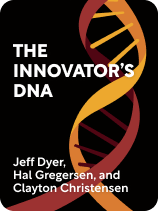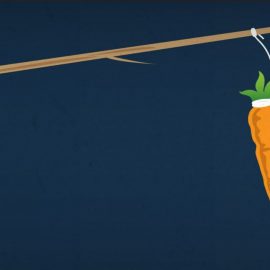

This article is an excerpt from the Shortform book guide to "The Innovator’s DNA" by Jeff Dyer, Hal Gregersen, and Clayton Christensen. Shortform has the world's best summaries and analyses of books you should be reading.
Like this article? Sign up for a free trial here.
Do subtle things escape your notice? What are you missing that you really should know about?
When you see what others don’t, you immediately have an advantage. The Innovator’s DNA identifies observation as one of the five Discovery Skills shared by the most disruptive innovators. The authors discuss the importance of observation skills and share tips to sharpen them.
Continue reading to learn how to improve observation skills in business or any endeavor.
Improving Observation Skills
Making careful observations is a crucial skill for connecting dots, asking questions, and prompting insights. Before sharing their advice on how to improve observation skills, the authors discuss how important these skills are to innovation.
By carefully observing current products, services, and business processes, innovators discover what works, what doesn’t, and where an innovative solution may be needed. Observing this way can spark new questions and allow you to think associatively as you discover the overlap between diverse data sets, unique situations, and differing industries.
Observe customers (your own or your competitors’) in different situations as they try to get something done, interact with technology, or use a service. By actively observing what works and doesn’t work for people, you may discover an unmet need, which could spark ideas for novel solutions. Keep an eye out for what the authors call workarounds—the often ingenious and unexpected methods people come up with to get things done using available products and services that lack some fundamental functions. Identifying a workaround presents an opportunity for you to replace it with a new and innovative product or service.
(Shortform note: In The Design of Everyday Things, Don Norman agrees with Gregersen, Dyer, and Christensen that the most useful types of observations occur in the real world (rather than in controlled tests like focus groups). However, Norman uses a different term to describe this kind of observation: applied ethnography. Applied ethnography encourages careful observations of people using products and services in real-world scenarios for an extended time. Norman encourages applied ethnography as the first step in solving design issues. The workarounds discussed by the authors often represent issues in product and service design, which you’re more likely to spot with this approach to observation.)
Techniques for Building Observation Skills
The authors recommend three methods to improve observation skills.
#1: Observe in new and unusual environments.
We observe more closely and carefully in new environments, especially unfamiliar ones like foreign countries. Take time to explore, visit places you’re curious about, and take note of anything that stimulates questions and insights.
#2: Observe with all of your senses.
The authors assert that you gather more information by observing with all your senses. Doing this leads to more associative thinking and innovative insights. Take 10 minutes every day to observe something intensely with all your senses and take notes. Then ask yourself: Are any of my observations relevant to a new strategy, product, service, or production process? Capture your experiences in the journal and see if any ideas come to mind.
(Shortform note: Research suggests that being in new environments can make you a keen observer because new surroundings stimulate your senses in a way that familiar environments don’t. As you encounter unfamiliar sights, sounds, smells, tastes, and textures, your brain must work to process the novel information, leading to increased alertness and attention. In turn, heightened alertness enhances your ability to observe and make sense of your surroundings.)
#3: Study others.
Observe companies you admire—both competitors and companies with innovative business models or products—and find out everything you can about them. Try to understand their technology and processes and discover if their solutions can be applied to different contexts in innovative ways. Take note of their strategies, operations, and products, and look for ways to adapt them to your company’s needs.
(Shortform note: The authors suggest observing your competitors, but they aren’t explicit about how to do this when competitors likely won’t let you into their offices. Two ideas for observing competitors are: 1) Attend industry events like conferences where your competitors may be present. Observe their booth displays, presentations, and interactions with attendees. 2) Monitor your competitor’s social media and review sites like Yelp. These platforms can provide valuable information on customer opinions and help you identify areas where you can improve your customer experience.)

———End of Preview———
Like what you just read? Read the rest of the world's best book summary and analysis of Jeff Dyer, Hal Gregersen, and Clayton Christensen's "The Innovator’s DNA" at Shortform.
Here's what you'll find in our full The Innovator’s DNA summary:
- The five key skills that are shared by the world's innovation leaders
- Why innovation in business is so important
- How to sustain innovative organizations and teams long term






